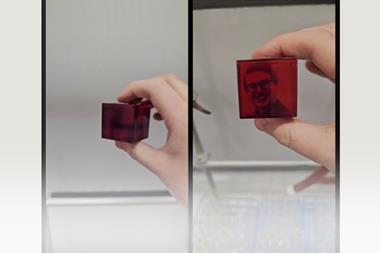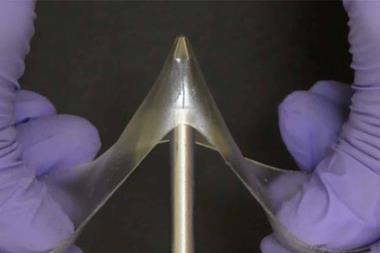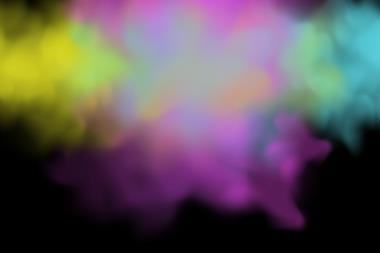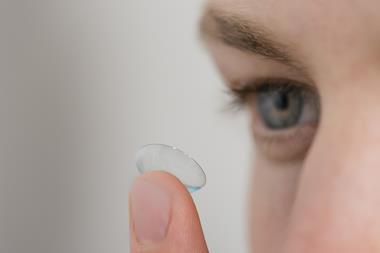A plastic cup that changes its colour and transparency thanks to the addition of dichroic gold nanoparticles has been 3D printed by researchers in the Netherlands.
Nanoparticles have been used for centuries to give colour to other materials, although craftspeople of the time didn’t know exactly what they were working with or why they had the optical effects they had. Stained glass windows are a prime example of this, as is the Lycurgus Cup, a glass vessel made in the 4th century that appears transparent and red when lit from the front and opaque and green when lit from behind. Vittorio Saggiomo and colleagues from Wageningen University wanted to combine these effects with materials that are compatible with modern techniques such as 3D printing.
The gold nanoparticles they made are dichroic – they interact differently with certain wavelengths of light, reflecting some and transmitting others. This means they not only change the colour of the material they are embedded in, but also its opacity.
The team used a modified version of the Turkevich method for producing gold nanoparticles to make larger, elongated nanoparticles with dichroic properties. They combined them with one of the most commonly used 3D printing materials, polyvinyl alcohol (PVA), to make a nanocomposite ink that could be used to print objects with interesting colour properties. The researchers made their own modern-day Lycurgus Cup that either appears brown and opaque or purple and transparent depending on how it is lit.
They say similar techniques could be used by artists in search of interesting coloured materials, or as a way of making different optical filters.
References
L Kool et al, ChemRxiv, 2018, DOI: 10.26434/chemrxiv.7240766.v1






















No comments yet